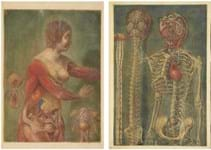
Books and works on paper
A SUPERBLY bound copy of one of the most important works in the history of science and, to quote Einstein, “…perhaps the greatest intellectual stride that it has ever been granted to any man to make”, doubled its estimate at a New York auction.
However, Isaac Newton’s Philosophiae Naturalis, Principia Mathematica only made it into print in 1687 through the scientific, moral and financial support of the then Astronomer Royal, Edmund Halley.
He encouraged Newton to complete the work that is usually referred to more simply as the Principia, as Newton acknowledges in the preface. Halley then edited it and, as the Royal Society’s funds had been depleted, took upon himself the cost of printing.
Halley was also instrumental in the book’s distribution. Two apparently concurrent issues can be distinguished from the title page imprint, one of which was distributed to British booksellers by Halley and Newton themselves.
The other issue, largely turned over to the publisher and bookseller Samuel Smith for distribution on the Continent, is considerably rarer and this example offered at Christie’s New York on December 14 is one of those copies. It may also be regarded as an association copy – even if the identity of the recipient is a mystery.
A morocco label on the front pastedown, decorated with a drawerhandle tool that is also used on the binding, bears only the words ‘Ex dono Sam: Smith Bibliopol London’.
Catalogued as ‘a London Restoration mosaic binding’ the book’s handsome covers (front shown left) also incorporate four tools that would appear to have been acquired from the older stock in the workshop of the royal binder, Samuel Mearne, who had died only a few years earlier, in 1683.
In 1966 this stunning copy was sold at Sotheby’s in London and had remained with the Christie’s consignor until the end of last year, when it was sold to yet another anonymous figure at $3.1m (£2.44m).
That sum accounted for around a third of the overall total for a sale that even without the Newton would have been an exceptional one.
Only one other copy of Newton’s Principia… in a fine contemporary binding such as this has sold at auction in almost 50 years. That copy was the one presented by Halley to the Duke of York, the future King James II, in his capacity as patron of the Royal Society. In December 2013 it made £2.1m in the same rooms.
December sales are good for Newton, it seems.
It was in December 2015 that Sotheby’s New York took a bid of $1.1m (then £595,170) on a 1704 first of Newton’s treatise on Opticks…
Until that time no copy had made more than $75,000, but the example offered as part of the Robert S Pirie library was one that Newton had inscribed as a gift to his benefactor – the man who in the following year became Sir Edmund Halley. That little note on the title page made this the most desirable of all copies and a world of financial difference.









